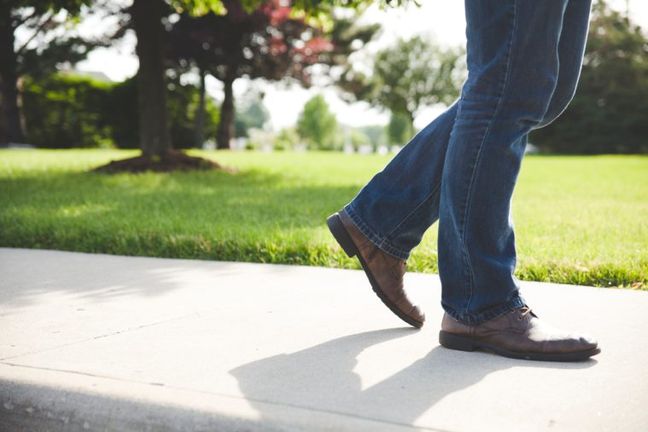What happens when a homeowner discovers a defect in their home, like a leaky roof, and then waits more than two years before suing the roofer who installed the roof? The lawsuit would, of course, be barred by the statute of limitations because the homeowner stood on his rights for too long. (See C.R.S. § 13-80-127 (1)(b).)
Generally, however, the clock for the statute of limitations does not begin to run until the homeowner discovers the problem. The homeowner has two years from discovery to sue. But, what if the roof in question is already 50 years old? Can the homeowner sue the roofer who installed the roof as long as he does so within two years of the leak? It hardly seems fair that a homeowner could sue a roofer whose work lasted 50 years.
This is where Colorado’s statute of repose comes in. The statute protects construction professionals whose work lasts for a certain time period – even if the homeowner files suit within the two-year period prescribed by the statute of limitations.
What is a Statute of Repose?
Under the statute of repose, no construction defect action may be filed beyond six years after substantial completion of improvement to real property. (C.R.S. § 13-80-104(1)(a) and see e.g. Bush v. Roche Constructors, Inc. (1991) 817 P.2d 608, 611.) The statute is extended by two years if the cause of action (or defect) arises during the fifth or sixth year after completion. The cause of action must be brought within two years after the date upon which the cause arises. (C.R.S. § 13-80-104(2).)
The cause of action arises not when plaintiff discovers the defect, but when plaintiff discovers the “physical manifestation” of the defect. (People v. Barber (1990) 799 P.2d 936, 940-941 [attorney disciplined for advising his client that construction defect statute of limitations could be indefinitely tolled by not hiring an expert to investigate defect, even though his clients previously observed physical manifestation of defect]; and see Hipco v. Varco-Pruden (1984) 687 P.2d 540, 541 [summary judgment affirmed where building owner considered to be on notice of defect because physical manifestations of roof defect, i.e. leaks and bowing, were visible].)
To illustrate application of the statute: if a roofer completes installation of a roof on January 1, 2000, and the roof does not leak until January 2, 2006, then the claim is barred by the statute of repose even if the homeowner were to file suit the day after discovering the leak. But, if the homeowner discovers the defect in year five or six, the statute is extended by two years from the date of discovery. (See C.R.S. § 13-80-104(2) and Hipco v. Varco-Pruden (1984) 687 P.2d 540, 541.) As an example, presume once again that the roofer completes his work on January 1, 2000. The homeowner discovers a leak five years later on January 1, 2005. Because the defect was discovered in year five, it is extended by two years to January 1, 2007 – for a total statutory period of seven years. In other words, the statute of repose will operate to bar claims against work completed more then six years before physical manifestation of the defect is discovered, but under the circumstances described above, could allow suit up to eight years after completion of the work.
It is important to note that when the statute is extended by two years via discovery of the defect in year five or six, it is extended by two years from the date of discovery (as opposed to two years from the expiration of the original six-year statute). (See C.R.S. § 13-80-104(2) and Hipco v. Varco-Pruden (1984) 687 P.2d 540, 541.)
What Claims Are Barred by the Statute of Repose?
The statute of repose bars not only construction defect causes of action, but also causes of action sounding in tort, contract, indemnity, or contribution. (See C.R.S. § 13-80-104(2) and Hipco v. Varco-Pruden (1984) 687 P.2d 540, 541.)
The prohibition of indemnification-based suits is particularly important to subrogated insurance companies seeking to file suit against construction professionals on behalf of their insured homeowners. This is because the statute of repose defense accrues to the subrogated insurance company at the same time it accrues to the insured homeowner. (See Am. Comp. Ins. Co. v. MTD Products (D. Colo., 2012) 2012 WL 503523 at 7.)
To illustrate, assume once again that our imaginary roofer finishes installation of a roof on January 1, 2000. The homeowner discovers the leak on January 2, 2006, and asks his insurance company to pay for the roof repair. The insurance company pays, and then files suit against the roofer one month later for indemnification. Under this scenario, the insurance company’s claim is barred by the statute of repose. This is true even though the homeowner’s insurance company filed suit against the roofer just 30 days after it learned about the claim. Suit is barred because subrogated insurance company is subject to the statute of repose defense as if it stood in its homeowner’s shoes. In other words, the homeowner’s discovery of the leak on January 2, 2006 (i.e. after expiration of the statute of repose) is imputed to the subrogated insurance carrier.
Summary
Taken together, Colorado’s statute of limitations and statute of repose provide dispositive defenses to construction defect claims filed either: 1) two years after discovery of the defect, or 2) six to eight years after completion of the work. These statutes offer a first line of defense in mitigating the expense of construction defect lawsuits. Consideration of of both statutes and should be part of any initial exposure evaluation to the construction professional.

 Author: Jacob Felderman
Author: Jacob Felderman
 Cannabis Workers Allege Quota to Trim 4 Pounds a Day Violates the California Labor Code
Cannabis Workers Allege Quota to Trim 4 Pounds a Day Violates the California Labor Code
 The Ninth Circuit Reminds Us: Every Word Matters
The Ninth Circuit Reminds Us: Every Word Matters
 NO WAY, PRO SE! The Consequences of Abusing the Judicial System as a Pro Se Litigant in Colorado
NO WAY, PRO SE! The Consequences of Abusing the Judicial System as a Pro Se Litigant in Colorado
 Victim of Financial Mismanagement or Unlawful Retaliation? New Jersey City University Program Founder Claims School Retaliated After Reporting Alleged Sexual Harassment
Victim of Financial Mismanagement or Unlawful Retaliation? New Jersey City University Program Founder Claims School Retaliated After Reporting Alleged Sexual Harassment
 “Real Housewives” Gets a Reality Check
“Real Housewives” Gets a Reality Check
 Missing a Chapter: Insufficiency of Expert Deposition Testimony in Medical Malpractice Litigation
Missing a Chapter: Insufficiency of Expert Deposition Testimony in Medical Malpractice Litigation
 Crash Course: Why Summary Judgment Misses the Mark in Illinois Multi-Cause Limousine Crash Collision
Crash Course: Why Summary Judgment Misses the Mark in Illinois Multi-Cause Limousine Crash Collision
 Bitter Truths: Lead, Cadmium, and Defective Pleadings in California Chocolate Class Action
Bitter Truths: Lead, Cadmium, and Defective Pleadings in California Chocolate Class Action
 The Law of Unintended Consequences: Including Insurance Brokers in Litigation Strategy Communication May Waive the Attorney-Client Privilege
The Law of Unintended Consequences: Including Insurance Brokers in Litigation Strategy Communication May Waive the Attorney-Client Privilege
 Dram Shop Wrongful Death Damage: Which Damages Cap Prevails?
Dram Shop Wrongful Death Damage: Which Damages Cap Prevails?
 An Overview of Common Personal Injury Damages in Colorado
An Overview of Common Personal Injury Damages in Colorado
 DOES UNINSURED MOTORIST COVERAGE ENCOURAGE ASSAULT?
DOES UNINSURED MOTORIST COVERAGE ENCOURAGE ASSAULT?
 DEFENDING A SELF-EMPLOYED PLAINTIFF’S LOST INCOME CLAIM: ARE PERSONAL TAX RETURNS DISCOVERABLE IN CALIFORNIA?
DEFENDING A SELF-EMPLOYED PLAINTIFF’S LOST INCOME CLAIM: ARE PERSONAL TAX RETURNS DISCOVERABLE IN CALIFORNIA?
 Can an Employer Be Held Liable for an Off-Duty Employee’s Tortious Conduct?
Can an Employer Be Held Liable for an Off-Duty Employee’s Tortious Conduct?
 When is a Landowner Liable for a Sidewalk-Related Injury?
When is a Landowner Liable for a Sidewalk-Related Injury?
 Can California Taxpayers Recover Interest Via Negligent Tax Preparation Claim?
Can California Taxpayers Recover Interest Via Negligent Tax Preparation Claim?
 CAN SURGICAL DEVICE PERSONAL INJURY PLAINTIFFS AVOID FEDERAL PREEMPTION BY MAKING A FALSE ADVERTISING CLAIM?
CAN SURGICAL DEVICE PERSONAL INJURY PLAINTIFFS AVOID FEDERAL PREEMPTION BY MAKING A FALSE ADVERTISING CLAIM?